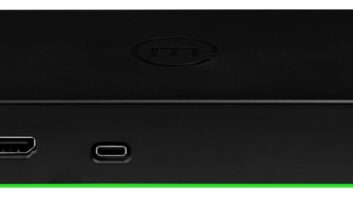Retail-level unit sales of cellphones are rising at low-single-digit rates, but dollar sales are skyrocketing as consumers opt for more expensive smartphones, MP3-playing phones and models equipped with Bluetooth and memory cards, The NPD Group concluded.
Third-quarter unit sell-through rose 4 percent to 38.1 million units, but dollar sales rose 47 percent to $3.15 billion, based on NPD’s consumer surveys. During the quarter, smartphones’ share of unit sales rose to 11 percent from 4 percent during the year-ago quarter, based on unit-sales growth of 163 percent, NPD said. The share of MP3-playing cellphones hit 50 percent, up from 25 percent during the year-ago quarter, and the share of models with memory card slots hit 33 percent from 14 percent. Bluetooth was in 72 percent of phones sold in the third quarter, up from 50 percent.
As a result, the average selling price rose to $82.81 in the third quarter, up from $58.95 in the year-ago quarter.
“The mobile phone market is not only growing, it is growing smarter,” said Ross Rubin, NPD’s industry director. “The nearly threefold increase in smartphones shows that this once negligible niche is becoming a more influential force in the consumer market, attracting entrants such as Apple and the Open Handset Alliance.”
The study also found that:
- average selling prices rose quarter by quarter since 2006’s third quarter;
- the unit shares of smartphones, MP3 phones, memory card phones and Bluetooth phones all increased every quarter since 2006’s third quarter;
- 10 percent of all phone users in the third quarter used their phone to play MP3s;
- 18 percent of all subscribers used Bluetooth; and
- 53 percent of all subscribers clicked pictures with their phone.
NPD also found that Motorola led the pack in unit-sales to consumers, with a 31 percent share followed by LG’s 17 percent, Samsung’s 16 percent, Nokia’s 11 percent and Sanyo’s 4 percent.
The top-selling models in unit share were, in order, Motorola’s Razr (all versions), LG’s VX8300, Motorola’s C139, Samsung’s SGHA707. LG’s VX5300, Applie’s 8GB iPhone, Motorola’s Krzr K1m, LG’s ENV VX9900, Nokia’s 6126 and RIM’s Blackberry Pearl 8100.
In another finding, NPD said most consumers seeking a prepaid subscription buy their phone from a mass merchandiser, primarily because of convenience and low prices. In contrast, consumers with no plans or post-paid plans select channels where they purchased a phone in the past and those that boast a wide selection of phones, “which is most likely a carrier store,” NPD said.
“Carriers continue to be the dominant distribution channel for mobile phones,” Rubin said. “However mass merchants are bringing in new customers, such as those on prepaid plans, and wireless specialists offer a broader range of carriers from which to choose.”
NPD based its conclusions on more than 150,000 completed online consumer research surveys each month. Surveys are based on a nationally balanced and demographically representative sample, the company said, and results are projected to represent the entire U.S. population.
Retail-Level Cellular Sales, Q3 2006-Q3 2007
(DOLLARS IN BILLIONS)











